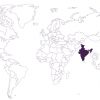Technologies such as AI, IoT, machine learning, blockchain to help push move towards connected care, they say
Integrated healthcare at a macro level means managing the overall well-being of the nation by putting the consumer at the centre; it involves delivering the required level of efficient and quality care to the consumers across their lifetime by connecting diverse stakeholders across the healthcare value chain.
Healthcare services in India are currently provided through a complex web of disconnected public and private stakeholders with services being highly medicalised and focus on wellness and prevention being limited. In addition, systems and standards for maintaining electronic medical and health records, and interoperability of patient data across healthcare systems still appears to be a distant reality.
Members of The Economic Times India Leadership Council (ETILC) discuss the possibility of moving towards ‘Connected Care’ through a series of interviews conducted by Deloitte Touche Tohmatsu India LLP (DTTI LLP). The group includes Shobana Kamineni, executive vice chairperson, Apollo Hospitals; Ambati Venu, managing director, Abbott India; Prashant Nagre, CEO, Fermenta Biotech; Gautam Khanna, CEO, PD Hinduja Hospital; Manoj Madhavan, managing director, Boston Scientific; and Devashish Ohri, exec VP (A-Pac), Avantor.
EMERGING TRENDS
The industry seems to be ripe for disruption today more than ever before. Several trends are making the move towards integration of healthcare imminent.
The mandate of government to provide universal healthcare at an affordable cost is resulting in policy and programmatic changes that support integration. While the Ayushman Bharat Scheme is geared towards secondary and tertiary care, the health and wellness programmes and NCD (non-communicable diseases) screening programmes are geared towards primary health care with upward referral as needed. These measures aim to integrate healthcare at the community and healthcare facility level while rebalancing the load between primary, secondary and tertiary care. These schemes are expected to not only bring care closer home for the consumer, but also result in better awareness generation, prevention and early detection at community levels.
Technologies such as machine learning, AI, IoT, blockchain, AR & VR, robotics are firing the imagination of several startups and nontraditional healthcare players — aggregators, big data and analytics companies, social media, mobile phone, e-commerce companies to disrupt existing business models either independently or in partnership with other healthcare stakeholders.
These technologies are enhancing the move towards connected care: they are helping power insights and drive efficiencies, and improve access and convenience in a way that can have far-reaching changes in the way healthcare is accessed and delivered. These initiatives, though few in number and not working at scale currently, give a glimpse of ‘the art of the possible’. The innovative use of these technologies can help integrate healthcare across the care continuum and have the potential to bring in patient-centric predictive intelligence and preventive, diagnostic, treatment and management solutions at scale.
In addition, there is a rapid emergence of consumers who feel increasingly empowered about their health and wellness choices on the back of internet and social media information and an ecosystem of smart phones, apps and wearables. They are beginning to demand more cost efficient, convenient, integrated and personalised solutions. Social media coverage and digital marketing is seen to be driving this trend to another level even in tier-2 and -3 cities.
CHALLENGES
Despite the tailwinds, several challenges exist: Every time a consumer/patient goes to a hospital, ‘zero-based’ exercise begins with lengthy history-taking and repeat investigations. Lack of system integration that could help the care provider access the results of previous medical visits and tests results in sub-optimal care while increasing the cost of providing healthcare.
Absence of integrated and interoperable data systems and platforms and standardisation and mobility of health records and data is one of the biggest challenges in provision of targeted, continuous and connected care rather than episodic care. Issues relating to data privacy, cybersecurity and appropriate data use are also key.
There is a lack of awareness among consumers, especially the urban and rural poor on the health risks of their choices and the benefits of preventive action including appropriate nutrition, sanitation, etc. Health seeking behaviour, on the other hand, is geared towards bypassing the under-serviced primary healthcare system and disproportionately increasing the load on tertiary systems with unintended consequences.
Proven and scalable revenue models for healthcare players to invest in primary care, patient connect platforms across the continuum of care are few and not very attractive for investment. Investment in EHR (Electronic Health Record) platforms, data systems have by and large been non-remunerative. The entry of non-traditional players into the health sector has been delayed as compared to other sectors such as the consumer business sector. The absence of incentives/sustainable revenue models/propensity to pay have all been some of the key stumbling blocks.
A technology-powered continuum of care approach is the hallmark of an integrated health system. However, it needs adequate skilled workforce (health and allied-health workers) that is trained to use technology and provide point of care health solutions to the consumer increasingly outside hospital settings. Skilling people to work in the new tech areas as well as in new environments that use these systems is seen to be a significant bottleneck.
WAY AHEAD
The task of developing an integrated health system which can leapfrog the learnings from more developed health systems, leverage the unique advantages of India’s ecosystem (e.g. large mobile phone usage, increasing internet penetration, almost universal unique identifier – Aadhaar card number) while overcoming the challenges mentioned above is onerous.
The government will have to play a key role in leading the mission of integrated healthcare. It has to increase health spend and investment as articulated in the Health Policy 2017 and catalyse the building blocks for a cost-effective, value-based and outcome-focused system. A national standard of electronic health record with complete mobility and interoperability needs to be created and implemented.
The government will also have to consider creating and nurturing a sustainable ecosystem that provides a stable policy environment and the right incentives to all stakeholders involved. This will enable them to usher in the necessary investments, innovation, skill upgradation and quality systems to enable India to have an aspirational integrated healthcare system that befits one of the largest economies in the world.
Deloitte Touche Tohmatsu India LLP has supported The Economic Time India Leadership Council for this initiative on understanding the industry opinion of ILC members. The views carried in the article are of ILC members, in entirety, and not of DTTI LLP or ET.










